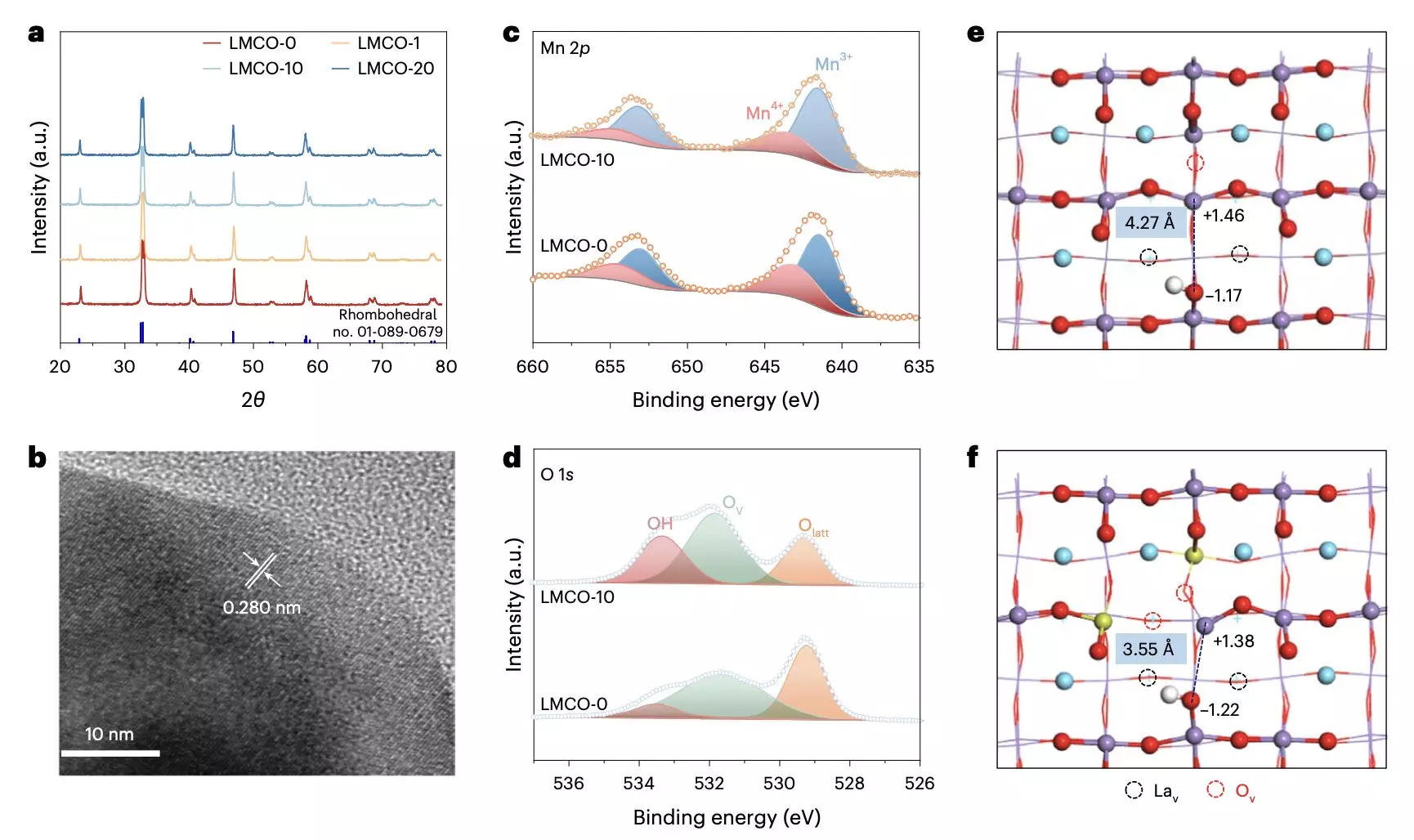Ethylene, a highly flammable compound used in various industries, has traditionally been produced through energy-intensive processes that result in significant carbon emissions. However, recent research has introduced a novel approach to ethylene production using solar-powered photocatalytic dehydrogenation of ethane. This groundbreaking method has the potential to revolutionize the way ethylene is manufactured on a large scale.
Researchers from Soochow University, University of Toronto, and other institutions have developed a method that involves converting ethane, a hydrocarbon abundant in natural gas, into ethylene and hydrogen using the perovskite oxide LaMn1−xCuxO3 as a photocatalyst. Unlike traditional methods that rely on fossil fuels for heat, this new approach utilizes solar or LED light for the conversion process, resulting in lower carbon emissions and energy consumption.
The unique properties of LaMn1−xCuxO3 make it an ideal candidate for catalyzing the conversion of ethane to ethylene and hydrogen. The surface-frustrated Lewis pairs within the perovskite oxide optimize the activity, selectivity, and yield of the dehydrogenation process. By fine-tuning the proportions of these sites, researchers were able to achieve efficient ethylene production rates without the need for external heat sources.
Through the use of a rooftop prototype device, researchers demonstrated the feasibility of their solar-powered ethylene production approach, achieving remarkable ethylene production rates. Comprehensive technical and economic analyses further underscored the economic potential of scaling up this innovative solution. The results showed promising outcomes, with high ethylene production rates and ethane conversion percentages.
Moving forward, researchers plan to delve deeper into the performance of the photocatalyst and photoreactor, aiming to enhance catalytic reactions and overall efficiency. By focusing on improving photochemical activation, light capture, and light transport rates, the team hopes to maximize the potential of the LaMn1−xCuxO3 perovskite for large-scale ethylene production. This ongoing research could pave the way for a more sustainable and environmentally friendly approach to meeting the growing demand for ethylene.
The development of solar-powered photocatalysis for ethylene production represents a significant advancement in the field of chemical manufacturing. By leveraging the unique properties of perovskite oxides and renewable energy sources, researchers have opened up new possibilities for reducing carbon emissions and energy consumption in the production of essential hydrocarbons. As further studies and optimizations are carried out, the potential for widespread adoption of this innovative approach continues to grow, offering a more sustainable future for the production of ethylene and other chemical compounds.


Leave a Reply